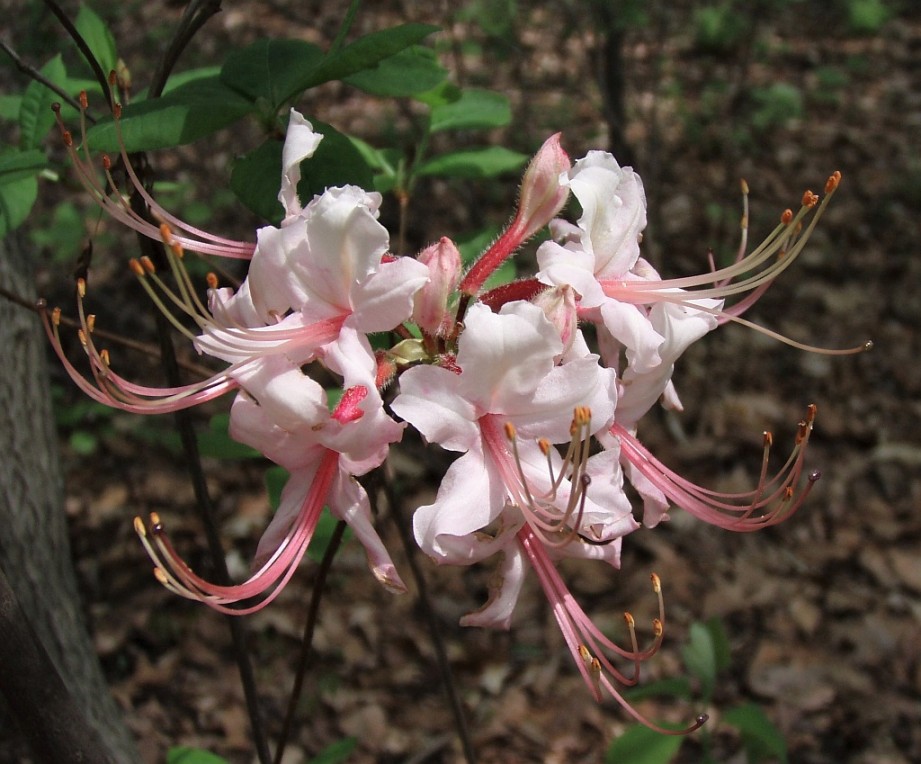Pinxterbloom Azalea: A Gardener’s Delight
The Pinxterbloom Azalea, scientifically known as Rhododendron periclymenoides, is a stunning flowering shrub that adds a burst of color to any garden. Renowned for its delicate beauty and vibrant blooms, this native North American plant has captivated gardeners for centuries.
Pinxterbloom Azaleas are deciduous shrubs that typically grow 3 to 6 feet tall and wide. They are prized for their showy, funnel-shaped flowers, which can range in color from white to pink to purple. The blooms often appear in clusters and are accompanied by attractive green foliage that turns a beautiful shade of red or bronze in the fall.
These azaleas thrive in acidic, well-drained soil and prefer partial shade. They are relatively low-maintenance plants, but they do require consistent moisture, especially during dry periods. Regular watering, mulching, and fertilization can help ensure optimal growth and flowering.
Pinxterbloom Azaleas are versatile plants that can be used in a variety of landscape settings. They make excellent foundation plantings, border plants, or informal hedges. They can also be grown in containers on patios or balconies. When planting, it’s important to choose a location that provides adequate drainage to prevent root rot.
In addition to their aesthetic appeal, Pinxterbloom Azaleas provide valuable habitat and food sources for wildlife. The flowers attract pollinators such as bees and butterflies, while the berries provide food for birds. These plants can also help to control erosion and improve soil quality.
While generally hardy, Pinxterbloom Azaleas can be susceptible to certain pests and diseases. Common problems include aphids, scale insects, and fungal diseases like powdery mildew and leaf spot. Regular monitoring and timely treatment can help to keep these plants healthy and thriving.
Pinxterbloom Azaleas can be propagated through various methods, including cuttings and layering. Cuttings are typically taken in the late summer or early fall, while layering can be done in the spring or fall. With proper care and patience, these propagation techniques can result in new plants that will continue to beautify your garden for years to come.
The Pinxterbloom Azalea is a beautiful and versatile plant that can add a touch of elegance to any garden. By understanding its cultural requirements and taking appropriate care, gardeners can enjoy the stunning blooms and other benefits that this native North American shrub has to offer.

